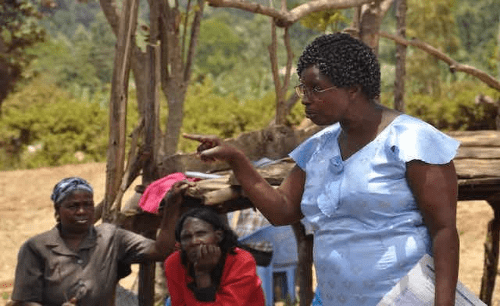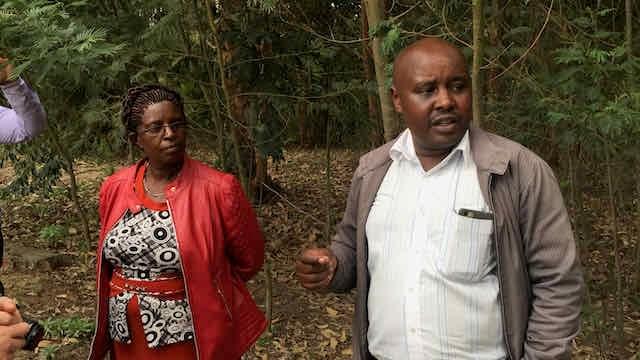


Taking These Trainings as a Small Group
Many prospective TIST members decide to review these trainings as a small group, and we would like to say "that is a great idea!" If you are completing these trainings as a small group then this is a good place to start. In this section you can learn enough about TIST Small Groups to form a group and start practicing TIST Small Group Best Practices. Then, as you proceed through the trainings, you will be able to discuss what you are learning with your group.
In this training you will learn about how TIST Small Groups are structure and how your group can start meeting. During this training you will learn about the following topics:
What is a TIST Small Group?
TIST Small Groups are made of 6-12 members who come from at least 3 different families who all live near each other. Good TIST Small Groups are made up of people who are hard-working and embody the TIST values. Small Groups are made up of friends and neighbours, and they are a place for TIST members to grow as leaders. In order to join TIST, you must belong to a Small Group. Many prospective TIST members speak to their family and neighbours about starting a Small Group.
By starting or joining a TIST Small Group, you are committing to certain responsibilities to both TIST and your Small Group. These responsibilities are:
Planting Trees
Each Small Group commits to plant at least 1,000 trees per year for 5 years.
Meet Regularly
Small Groups commit to meeting at least once per week.
Sign the GHG Contract
All members of the Small Group must sign the Green House Gas Contract Together
Embody the TIST Values
Each Small Group member commits to upholding and practicing the TIST Values.
Use Small Group Best Practices
These Best Practices include rotational leadership and Kujengana.
Ready to Get Started?
Is your group made up of 6-12 members from at least 3 different families? Think about who is in your group, because you will be working together for over 30 years? Also decide whether you need to invite additional people or possible help another small group get started.
Is your small group ready to embrace and uphold your commitments as a Small Group? Take some time right now to discuss how you will meet regularly together, how you will plant trees, and how you will uphold the TIST Values. Don't worry if some of this is unclear, topics like the Green House Gas Contract will be covered in later trainings.
The Benefits of TIST Small Groups
TIST has operated using Small Groups from the beginning, and TIST members have found Small Groups to be the best way for sharing information and building relationships. After over 20 years of working in farmer-led Small Groups, TIST has discovered valuable benefits to Small Groups. Read the benefits below, and then discuss with your group other benefits you think you will experience by meeting together.
Getting Work Done
TIST participants get much more work done in Small Groups.
Accountability
Small Groups help TIST members be accountable to each other. When one person is successful, the whole group is successful.
Encouragement
TIST Small Groups allow members to share encouragement and experience.
Learn from Peers
TIST Small Groups are made of people from at least three different families so that different people will have the opportunity to lead and meet new people.
Big Results with a Low Budget
TIST Small Groups help achieve the TIST Value of Big Results with a Low Budget.
Growing Leaders
TIST Small Groups are nurseries for leadership development, and many small group members go on to serve with TIST.
Rotating Leadership
Now you are ready to learn about leadership roles in a TIST Small Group. There are 3 leadership roles: A Leader, Co-Leader, and Accountability Person. Each of these roles rotates at each weekly Small Group Meeting. This is called Rotational Leadership. Rotational Leadership is a core part of the TIST Small Group. TIST Small Groups will work together for over thirty years, and each person in the group will have the opportunity to act as the group leader many times over the life of the group. This ensures that every person in the group has the opportunity to participate as both a group member and a leader.
Read more about these 3 roles below, and then decide who in your group will serve in these roles for the remainder of your meeting.

Leader
The Leader is a servant to the group, and facilitates the meetings and makes sure each person in the group is able to participate. The leader exemplifies the TIST values and encourages group members.

Co-Leader
The Co-Leader helps the Leader facilitate the group and serves as the group time-keeper. The Co-Leader becomes the Leader at the next meeting, reads the meeting notes, and helps to train the Accountability Person.

Accountability Person
The Accountability Person reminds the group of their responsibilities and previous and current commitments. They take the meeting notes and help support the Leader and Co-Leader. The Accountability Person becomes the Co-Leader at the next meeting.
Rotating Leadership is practiced at every level of TIST, including both Small Groups and Clusters (Clusters will be introduced later in this section). Leadership is rotated at every meeting (weekly), with the Co-Leader becoming the Leader, the Accountability Person becoming the Co-Leader, and a new Accountability Person being elected.
Elections are done democratically and each person in the TIST Small Group has an equal vote.
Leadership alternates between men and women at each level of TIST. This means that if the current Accountability Person is a man, the next one will be a woman. Thus the leadership always alternates between men and women.
The Benefits of Rotating Leadership
There are many benefits to rotating leadership, and you can probably identify additional benefits with your small group. Take some time to discuss some other benefits of rotating leadership you think you might experience.
All Serve
Every person has the opportunity to serve as a leader.
Using Gifts
Every person has different gifts to offer, and we don't always know what they are until we have had a chance to use them.
Equal Opportunity
There are equal opportunities for both men and women, and so no one is left out.
Encouragement
Rotating leadership encourages leadership for new people and for people who are shy.
Learn from Each Other
We get to learn from each other about what makes a good leader.
New Ideas
Rotating leadership makes sure there are new ideas and different types of leadership in each group.
What is Kujengana?
Now that you know about rotational leadership, it is time to introduce you and you group to Kujengana. Kujengana is the Swahili word that means "to build up," and it is something that is done at the end of every TIST meeting. Kujengana is a very important part of each weekly Small Group meeting. It is at the very foundation of the TIST values. Each person in TIST has their own special talents and gifts that they bring to TIST. Every person is a leader, and every person has something valuable to contribute. Kujengana is the practice of saying this value out loud.
Kujengana is practiced at the conclusion of every small group meeting. Each person in the group takes a turn telling the leader one positive thing that the leader did during the meeting. Think of it as something a "fly on the wall" would see and hear. These are specific statements, and each member of the group says something different. Some groups even do Kujengana for the co-leader.
In response to Kujengana, the leader simply says "thank you." There is no discussion of how things could have been done differently or better. By practicing rotating leadership, everyone gets to experience Kujengana.
Ready to practice? Great! Tae some time right now to practice giving Kujengana to your Leader and Co-Leader. When you are done, take a few minutes as a group to discuss how this made you feel.
Ready to Start Learning More Together?
Congratulations! Now that you are a small group and understand the basic best practices of TIST Small Groups, you are ready to get started reviewing the rest of the trainings. Click on the button below to start learning more about TIST, and we look forward to many years of planting trees together!
Side-Loading?
Do you need to take this training offline? Click on the button to the right to download this training content for side loading.
Have a question or comment? Click here to let us know.
Copyright © 1999-2021
Copyright © loading...




